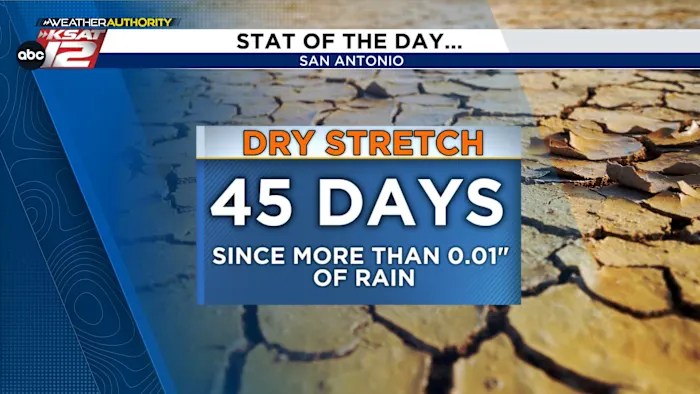
San Antonio has been enduring an unusually long dry spell, and residents across the city are beginning to feel the effects.
According to records, the last time San Antonio saw a truly significant rainfall event— measuring over two inches — was on Aug. 31 with 3.11 inches.
With more than 40 consecutive days without measurable rainfall, the region is currently experiencing one of its driest periods in recent memory — comparable to a similar streak in 2015.
While there have been some isolated drizzles since then, they’ve done little to alleviate the drought conditions gripping the area.
Impacts
Declining water levels are prompting stricter measures.
Landscaping suffers, with parched lawns, brittle trees and dusty roads becoming more common. Wildfires are also a growing concern, especially in rural areas. Dusty conditions and poor air quality worsen discomfort, particularly for those with respiratory issues.
Ironically, when the rain does finally arrive — and forecasts suggest a slight chance later this week — the city may face a new challenge: flash flooding.
Dry, compacted soil doesn’t absorb water well, so sudden downpours can result in dangerous runoff. San Antonio is located in “Flash Flood Alley,” one of the most flood-prone regions in the country.
Residents should be especially cautious when storms return. For a list of low-water crossings, visit Bexarcountyflood.org.
If heavy rainfall occurs after a long dry spell, low-water crossings and poorly drained areas can flood quickly. The rule of thumb remains critical: turn around, don’t drown.
In the meantime, residents are urged to take practical steps:
-
Conserving water remains crucial
-
Homeowners should clear gutters and check their drainage systems in anticipation of future rainfall
-
Those in flood-prone areas should review their emergency plans and ensure their property is protected.
Copyright 2025 by KSAT – All rights reserved.
Great Job Shelby Ebertowski & the Team @ KSAT San Antonio Source link for sharing this story.